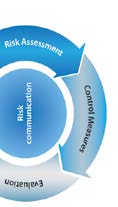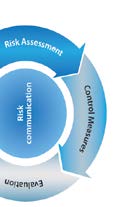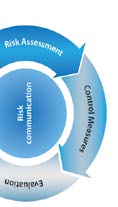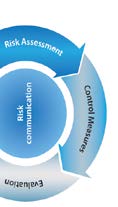Glenabbot.co.uk

WHO RISK ASSESSMENT
Human infections with avian influenza A(H7N9) virus
10 May 2013
A total of 131 confirmed cases of human infection with avian influenza A(H7N9) virus have been
reported to WHO by China National Health and Family Planning Commission and one case by the Taipei
Centers for Disease Control (Taipei CDC). Although cases have been reported in both sexes and across a
wide range of ages, most cases have occurred among middle-aged and older men. Thirty-two people
have died, and most of the other cases are considered severe. In addition to the case reported by Taipei
CDC (with a history of recent travel from Jiangsu), cases have been reported from Anhui, Fujian, Henan,
Hunan, Jiangsu, Jiangxi, Shandong and Zhejiang, and the municipalities of Beijing and Shanghai. Much remains unknown about this virus, including the animal reservoir(s) in which it is circulating, the
main exposures and routes of transmission, and the scope of the spread of this virus among people and
animals. Investigations are ongoing and evidence is inconclusive. Nevertheless, human infection appears
to be related to exposure to live poultry or contaminated environments because:
• The virus in humans is genetical y similar to that found in animals and the environment (live
• Most human cases (approximately three out of four patients) report a history of exposure to
animals, mostly chickens.
• The virus has been detected in poultry in live bird markets. • The number of human cases appears to have decreased after closure of live animal markets.
Whether other potential reservoirs of this virus may exist, including in other domestic and wild bird
species, and mammalian species, has not yet been determined. And although two family clusters have
been reported, there is no evidence of sustained human-to-human transmission:
• Monitoring and testing of contacts (>2000 people) of confirmed cases has detected few
• Testing of more than 20,000 people with influenza-like illness (ILI) in March and April has
confirmed only six infections with H7N9. This finding suggests that milder cases of H7N9
infection are not occurring in large numbers.
This is the first time human infection with the avian influenza A(H7N9) subtype has been detected.
Previously, sporadic cases of human infection with other influenza A(H7) viruses have been reported
which were associated with outbreaks of infection in poultry. The few A(H7) human infections that have
occurred general y resulted in mild il ness and conjunctivitis, with the exception of one death.

Genetic and laboratory characterization of avian influenza A(H7N9) viruses isolated from humans
• The virus contains a group of influenza virus genes from multiple origins. • Some genetic changes, including amino acid substitutions associated with increased affinity to
alpha 2-6 receptors, suggest that H7N9 may have greater ability to infect mammals, including
humans, than other avian influenza viruses.
• Sequence variations among the genes of the isolates suggest that there has been more than one
introduction of this virus from animal into humans.
• Genetical y, these viruses are in general expected to be sensitive to the neuraminidase inhibitors
oseltamivir and zanamivir, but resistant to the antiviral drugs amantadine and rimantadine.
• The isolates have a haemagglutinin structure that is associated with low pathogenicity in birds.
The virus has not been reported to cause severe disease in poultry. The absence of this signal limits the
ability to easily detect the virus in birds, in contrast to avian influenza A(H5N1).
Risk assessment
This risk assessment supersedes the document posted on 13 April 2013. It has been prepared in
accordance with WHO's published recommendations for rapid risk assessment of acute public health
events and wil be updated as more information becomes available. The risk has not changed since the
previous assessment.
What is the risk that more human cases will occur in the affected areas?
The understanding of the epidemiology of this outbreak and virus remains limited, including the main
reservoirs of infection and the extent of geographic spread among animals. However, it is likely that
most human H7N9 infections have been associated with contacts with animals or live bird markets.
Further human cases should be expected. Other avian influenza viruses such as H5N1 have
demonstrated a seasonal pattern in which human cases have been less frequent in summer months and
more frequent in winter months. It remains to be seen whether H7N9 infections wil fol ow the same
seasonal pattern. Most human cases have resulted in clinical y severe il ness.
What is the risk of human-to-human transmission?
There is no evidence of sustained human-to-human transmission. However, two family clusters suggest
that limited human-to-human transmission may occur where there is close contact between cases and
other people, as occurs in families and potential y in healthcare settings. Moreover, the genetic changes
seen among these viruses that suggest adaptation to mammals is of concern, and further adaptation
may occur. Should sustained human-to-human transmission occur with an increased number of clinical y
severe cases, health systems are likely to be strained.
What is the risk of international spread of H7N9 by travelers?
There is no indication that international spread has occurred. An infected person, whether symptomatic
or not, who travels to another country, could spread the infection. However, as the virus does not

appear to cause sustained human-to-human transmission, extensive community spread is unlikely. If
transmissibility were to increase, then the possibility of spread would likewise increase.
Does WHO recommend any travel precautions related to H7N9?
WHO does not advise special screening at points of entry with regard to this event, nor does it currently
recommend any travel or trade restrictions.
Resources
Liu D, S. W. (2013). Origin and diversity of novel avian influenza A H7N9 viruses causing human infection:
phylogenetic, structural, and coalescent analyses.
Li Q, Z. L. (2013). Preliminary Report: Epidemiology of the Avian Influenza A (H7N9) Outbreak in China.
New England Journal of Medicine
Chen Y, L. W. (2013). Human infections with the emerging avian influenza A H7N9 virus from wet market
poultry: clinical analysis and characterisation of viral genome.
Cuiling Xu, Fiona Havers, Lijie Wang, Tao Chen, Jinghong Shi, Dayan Wang, Jing Yang, Lei Yang, Marc-Alain Widdowson, and Yuelong Shu. (2013). Monitoring Avian Influenza A(H7N9) Virus through National Influenza-like Illness Surveillance, China. Emerging Infectious Diseases: Liu Q, L. L. (2013). Genomic signature and protein sequence analysis of a novel influenza A (H7N9) virus that causes an outbreak in humans in China. Microbes and Infection
WHO. (2012). Rapid Risk Assessment of Acute Public Health
Additional Information
Most recent disease outbreak news can be found at:
Frequently Asked Questions and other information on human infections with avian influenza A(H7N9)
are available at:

Public health relevant virological features of influenza A(H7N9) causing human infection in
Source: http://www.glenabbot.co.uk/Wordpress/wp-content/uploads/2013/05/RiskAssessment_H7N9_10May13.pdf
Microsoft word - deb thèse.doc
ECOLE NATIONALE VETERINAIRE D'ALFORT L'ANXIETE CHEZ LES ANIMAUX DE COMPAGNIE : APPROCHES CONCEPTUELLE, CLINIQUE ET THERAPEUTIQUE DOCTORAT VETERINAIRE Présentée et soutenue publiquement devant LA FACULTE DE MEDECINE DE CRETEIL Marie FAIRON Née le 18 Décembre 1979, à Chambray-les-Tours (Indre-et-Loire) Professeur à la Faculté de Médecine de Créteil
climatechange.lk
NAMA Design Document for Transport Sector of Sri Lanka Contents Transport and Development Nationally Appropriate Mitigation Actions (NAMAs) A Transport NAMA – An Opportunity for Sustainable, and Inclusive Green Growth in Sri Transport Sector in Sri Lanka The Millennium Development Goals Transport Sector Overview